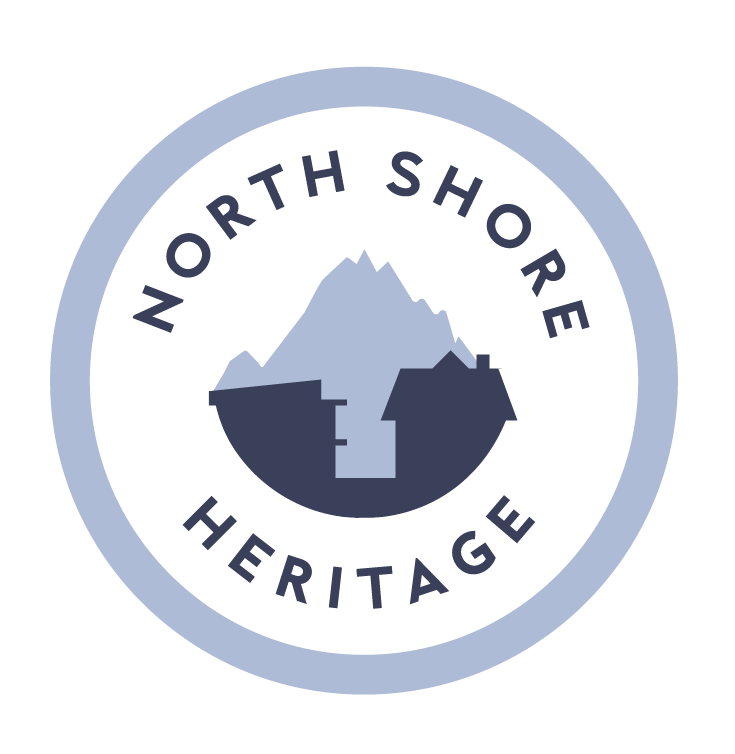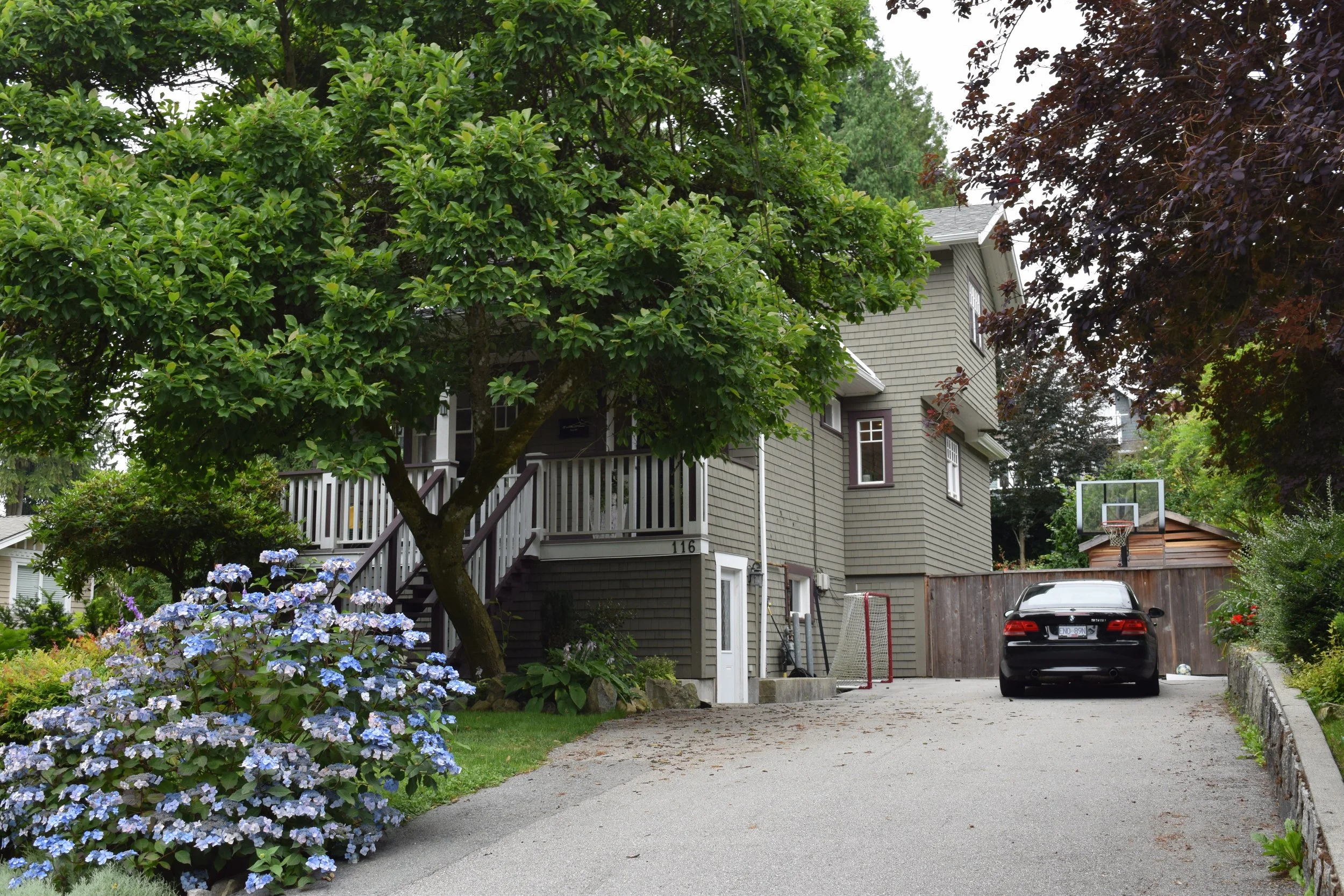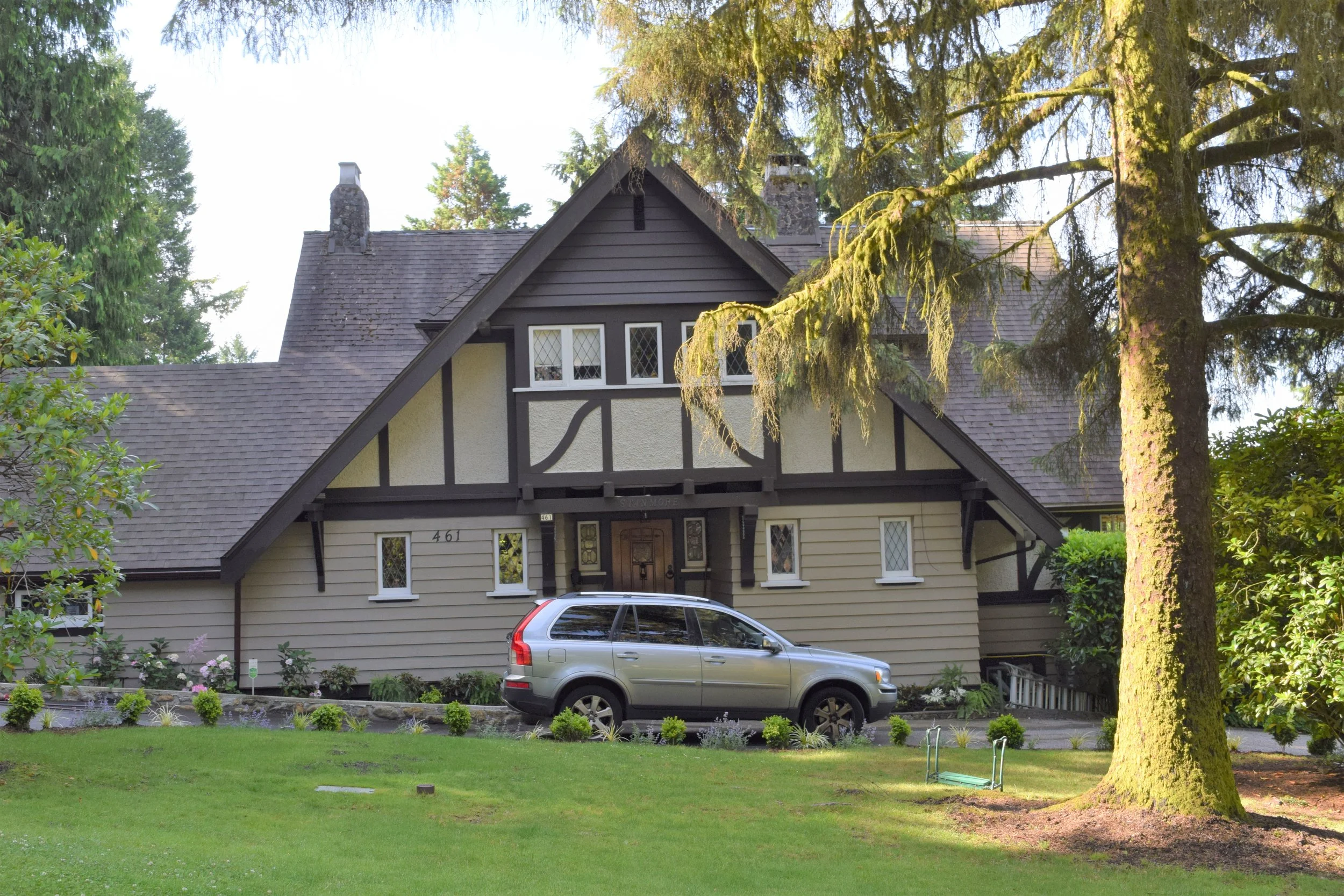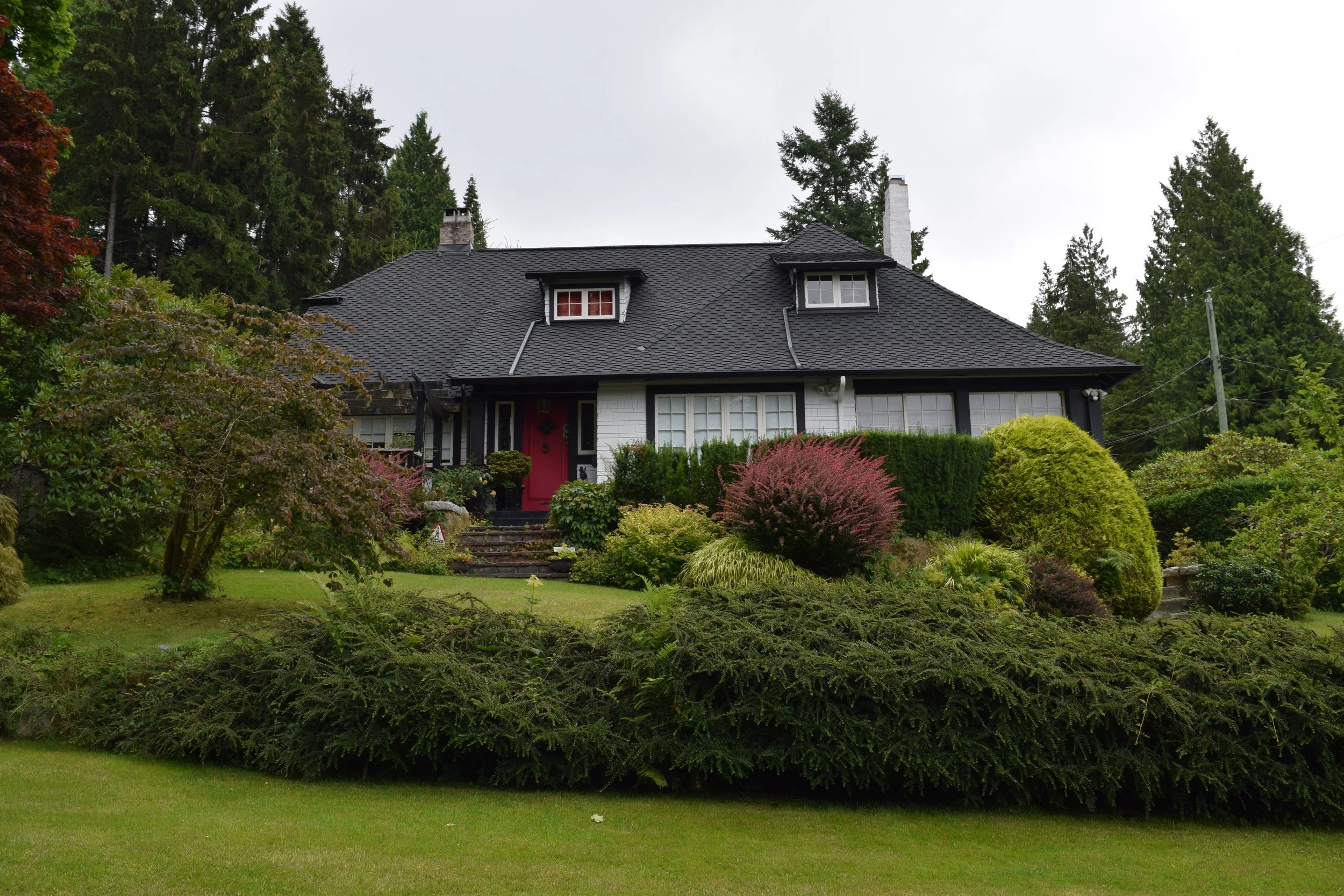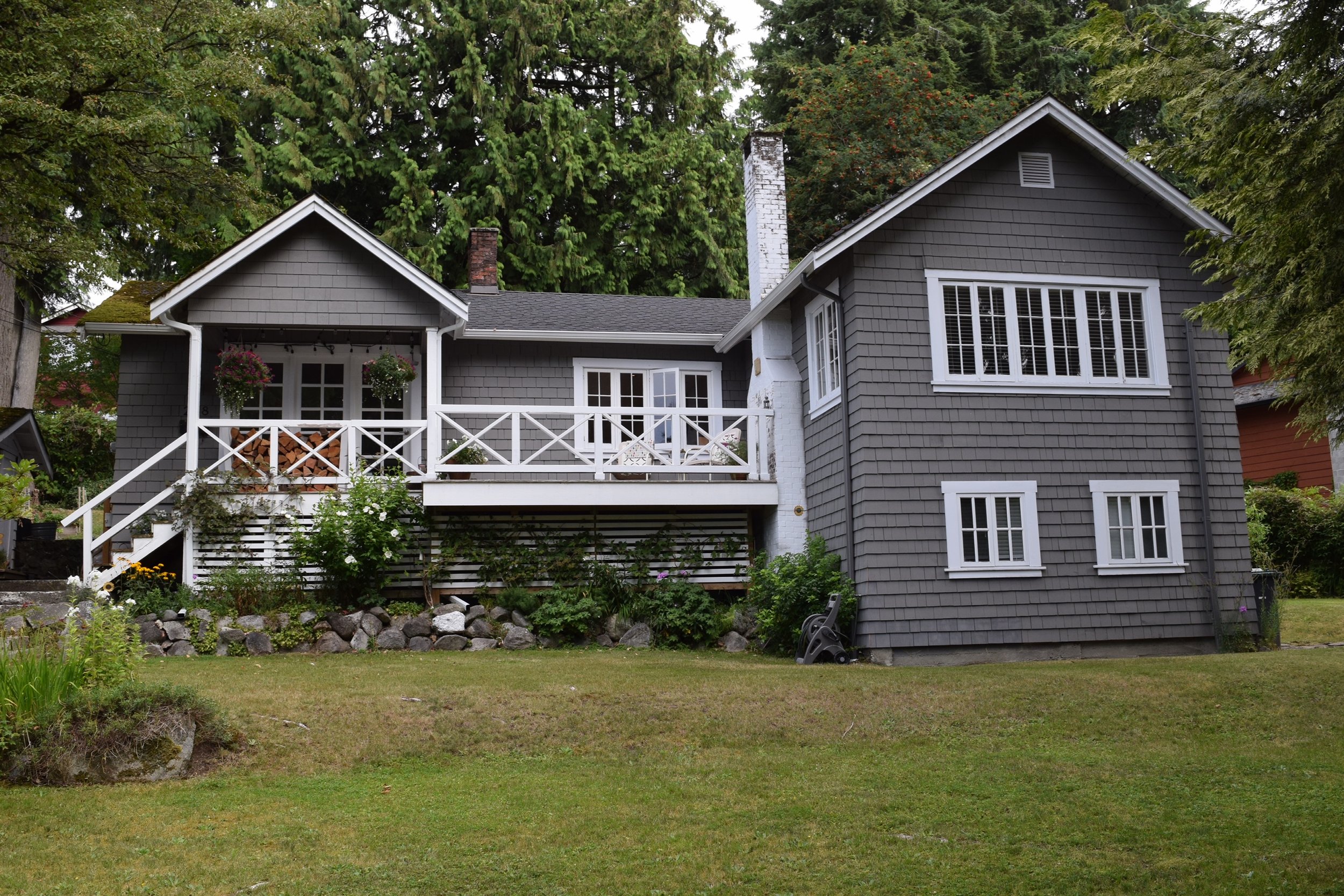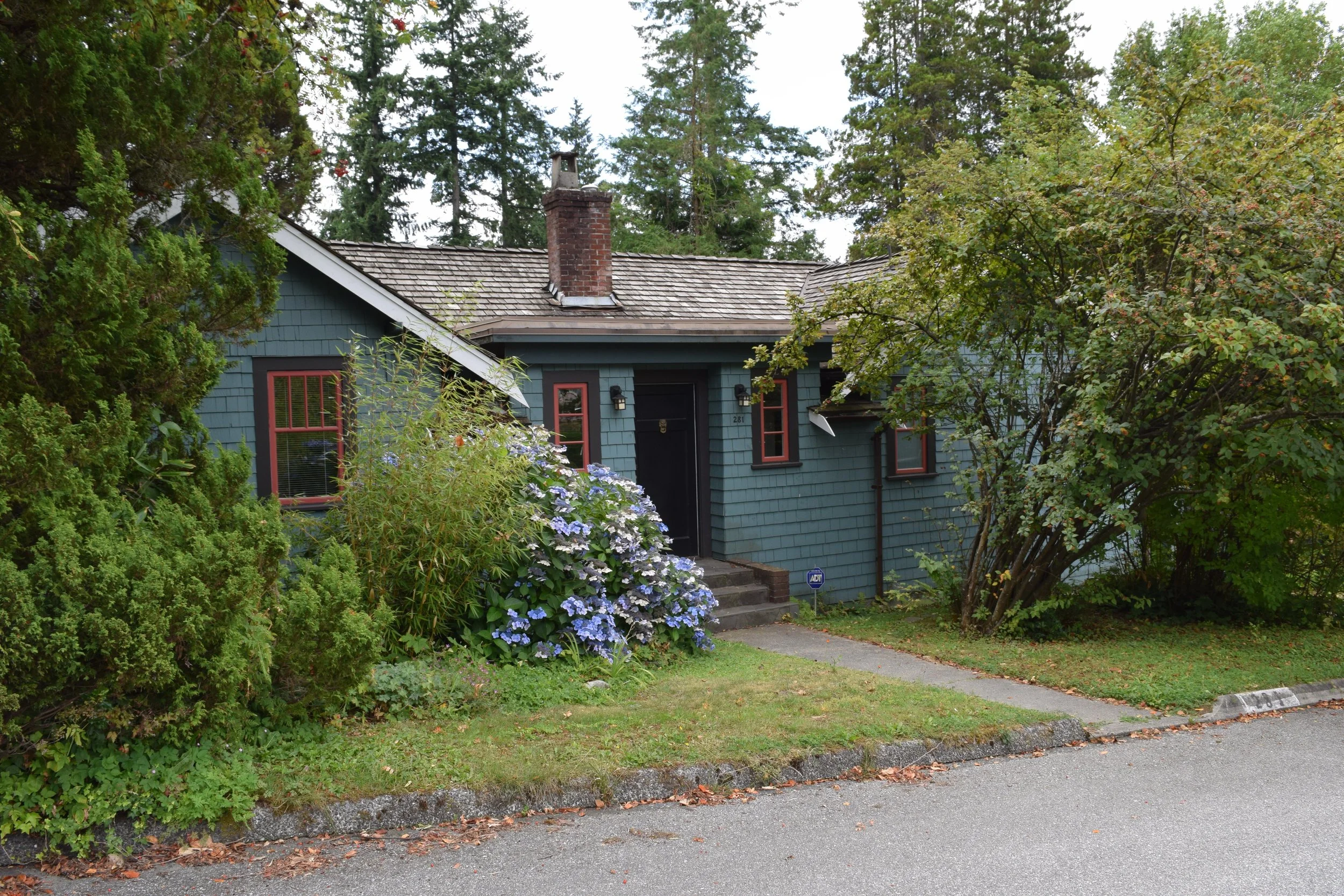Street names – they address where we live quite literally but they can also address the identity and history of an area. And, unlike the logical sequence of numbered streets, the choice of many of our street names can seem like the arbitrary whim of some bygone planner. There are self-descriptive streets such as Main, Station, Park, Church, Beach, et cetera. No need to wonder who named them. They more or less named themselves. Then there are themes such as trees, poets, historical events, battles, generals, politicians and royalty. But finding out who it was and why and when it was that a street name or an area of street names were decided upon can be elusive, like the royal street names of Upper Lonsdale.
These questions occurred to me when Queen Elizabeth II died this past September at her beloved Scottish summer home, Balmoral Castle, built in 1856 for Queen Victoria and Prince Albert. I was reminded that the Upper Lonsdale corridor north of 29th is home to the street names of several royal residences such as Balmoral, Carisbrooke, Holyrood, Kensington, Osborne, Sandringham, St. James and Windsor and the village of Braemar. Balmoral and Braemar Roads sit at the top of Lonsdale, Braemar being a village just west of Balmoral Castle and is home of the annual Braemar Gathering of the Highland Games with kilt-clad men tossing cabers and putting the stone, a precursor to shot putting.
After the Queen’s death, her remains were taken from Balmoral to the 17th century Palace of Holyrood House in Edinburgh, the monarch’s official residence in Scotland. Further down Lonsdale are Windsor and St James and it was at the 11th century Windsor Castle where the Queen was laid to rest. The monarch’s official English residence is the 16th century St James’s Palace, built by Henry VIII and not, as is generally assumed, Buckingham Palace. King Charles I spent his final night on earth at St James’s Palace prior to his execution in January 1649, but prior to his trial he was held at 12th century Carisbrooke Castle, on the Isle of Wight. When we think of Carisbrooke, odds are we think of Carisbrooke Park and Carisbrooke Elementary School and not a castle.
Bordering Carisbrooke Park are East Carisbrooke and East Osborne. It is also on the Isle of Wight where Queen Victoria and Prince Albert built, in 1851, a summer residence called Osborne House. 17th century Kensington Palace was the birthplace of Queen Victoria in 1819 and it has been home to many of the royals, including Princess Diana and her son the Duke of Cambridge, now Prince of Wales, while 19th century Sandringham House is where, in recent years, the royals marked Christmas. The early 20th century saw the beginning of the “royal” neighbourhood in North Vancouver where today remain some rather fine settlers’ residences from that time. Perhaps the royal street name decision was made after Queen Victoria’s death in 1901 – or after her heir, Edward VII, died in 1910. Or perhaps you, as a reader, know the answer or can hazard a guess.
Some early North Vancouver immigrant settlers, many Scottish and English, moved uphill, to what was then known as North Lonsdale, to escape the more congested commercial and industrial areas of Lower Lonsdale. This area of undeveloped land was transitioning from former forest to residential lots and residences. The new structures ranged from modest to grander homes reflecting in their design “old country” architectural elements such as British Arts and Crafts and Tudor Revival.
Two such Scots settlers were the Architect Henry Blackadder and Jack Loutet, the latter a real estate and insurance agent, notary and postmaster who served as a Reeve of the District of North Vancouver, Mayor of the City of North Vancouver and as an MLA. Today a park and a farm bear his name. Loutet’s storefront office was at 213 Lonsdale and Blackadder, with his architect partner A.S.W. Mackay, also established their architectural firm in lower Lonsdale. The architect Blackadder connected well with real estate agent Loutet - so well that they became neighbours in Upper Lonsdale with Loutet at 177 East Carisbrooke (built in 1911), his mother at 116, and Blackadder at 172, which no longer exists. Blackadder and Mackay were the architects for the impressive 1925 Ames Tudor Revival house at 190 East Carisbrooke built for Englishman Cyril Ames. But there were no grandiose staircases in a Blackadder-designed house as he believed wide staircases were for those “too weighty in body and head”. On the other side of Carisbrooke Park, at 173 East Osborne, is the 1921 Steele residence a modest Tudor revival design by Blackadder Mackay that today, while it still exists, is secluded behind a high fence.
116 East Carisbrooke, Eaton Residence, the home of Jack Loutet’s mother. Photo courtesy of Jennifer Clay.
177 East Carisbrooke, Loutet Residence, the home of Jack Loutet. Photo Courtesy of Jennifer Clay.
190 East Carisbrooke, Ames Residence, Architects Blackadder-Mackay. Photo courtesy of Colin Lawrence.
East Windsor, from Lonsdale to Regent, has twelve original settlers’ homes on the DNV Heritage Register while East St James has six. Stanmore, at 461 East Windsor, was built in 1927 for another Scot, Hugh Archibald Stevenson and his wife, Alice Maude, costing the princely sum of $11,500. Designed by Blackadder, in the Tudor Revival architectural style, with strong Arts and Crafts influences, it is described in the DNV Heritage Register as an integral example of a relatively grand house in the local context. Hugh and his wife named it Stanmore, after a hill in Scotland where they had courted. The next owners of Stanmore were Roland and Stella Jo Dean, a former CNV Councillor who was said to be passionate about the garden at Stanmore. The house remains in the family and Stella Jo Dean’s contributions to North Vancouver are honoured by a plaza in her name next to the RCMP station on East 14th.
461 East Windsor, Stanmore, Photo Courtesy of Jennifer Clay
One of the most impressive of the six heritage houses on St. James is the 1914 Wakley residence at 414 East St James designed by then recently arrived from Scotland architect William Bow who went on to becoming really prominent and successful in his field in North Vancouver and beyond. (His home, the Bow residence, is at 320 Tempe Crescent and Bow also designed the 1929 North Vancouver General Hospital). Stanley George Wakley was chief clerk at the North Vancouver branch of the B.C. Electric Railway Company. His home’s design, with its striking bellcast-hipped roof, shed dormers and casement windows is derived from the Craftsman and British Arts and Crafts styles.
414 East St James, Wakley Residence, Photo Courtesy of Jennifer Clay.
Further north at 123 East Kensington you can find the 1921 Craftsman Lambert residence featuring an attractive three gabled roof.
123 East Kensington, Lambert Residence, Photo courtesy of Colin Lawrence.
There are no early houses on the DNV Heritage Registry for Balmoral, Holyrood and Sandringham but there are on Braemar including the Ross Residence at 258 East Braemar, where the original part of the current house was built in 1925 for a woman, Miss Irene Sherlock Ross. It is the oldest surviving house in the immediate surrounding area. It was unusual at that time for a house to be built for a woman. Despite her Scottish surname, her Canadian parents were married in Ontario and she was born in Puebla de Zaragoza, Puebla, México, 12 July 1894 and died in North Vancouver in 1959.
258 East Braemar, Ross Residence, Photo courtesy of Jennifer Clay
The other Braemar house, at 281 West Braemar, is named Tor y Mar, said to be the Gaelic for a meadow in the mountain. It was built in 1920 by William Woods an Englishman who served in the WWI and who afterwards, emigrated here for a new life in which he became a councillor and a reeve of the District of North Vancouver. The simple Craftsman style house, that Woods named Norwood, was surrounded by an acre of land that incorporated a riding academy and a pasture for cows. It was a mini estate that, after Woods’s ownership, became the home of the first female landscape architect in B.C., Barbara Mather and her mother Otta Mather. Barbara developed a large, impressive garden that was featured in magazines of the time. The land was sub-divided after the death of Otta in 1970 and then a miracle of conservation occurred when the current owners, Richard Brail and Adrien Ross, bought the house and became stewards of the remaining land and conservers of the house leading to two DNV Heritage Awards, one in 1996 and again in 2021.
281 West Braemar, Tor Y Mor, Photo courtesy of Jennifer Clay.
Discovering the who, when and why behind the decision to name Upper Lonsdale streets with royal names remains elusive. In addition to the residences mentioned, there are the ‘title” streets of Regent, Duchess, Princess, Kings, Queens and a Royal. In the Upper Lonsdale corridor, there are very fine early settler residences that, like the original royal residences, embody the history of the people who once lived in them. It is a curious occurrence that when people leave their homelands to start a new life in fresh pastures, they then introduce features and traits from whence they came.
Fast Facts:
The District of North Vancouver Council approved in February 2015 the following. It is the policy of Council that there be Naming Selection Criteria and Procedures to provide a consistent and transparent approach to the naming of streets, parks, community facilities and places in the District of North Vancouver and to inform the work of the Place Naming Committee and Council decision making regarding name selection.
The City of North Vancouver Council approved a Civic Naming Committee Policy effective Date July 16, 2012 Revised October 21, 2013 to establish civic policy to guide the City of North Vancouver's Streets and Parks Naming.
The Municipality of West Vancouver - the street naming corporate policy (2003) requires Council approval for all street names.
Sources:
Monova, North Vancouver Museum and Archives sources, including the following: Express, Volume 25 Number 1, March 2016, p3, Henry Blackadder by Sharon Proctor. https://monova.ca/wp-content/uploads/2014/04/March-2016-issue-for-web.pdf
The District of North Vancouver Heritage Registry.
https://www.dnv.org/sites/default/files/edocs/heritage-register-2020.pdf
North Shore News Article about 281 West Braemar, by Nick Laba, 22 October, 2022.
https://www.nsnews.com/living/heritage-home-to-reeve-of-north-vancouver-100-years-ago-5984920
Ancestry.ca
